
Minor Oral Surgery Made Super EASY
A MOS course carefully designed by me, Dr. Jessica.
In this course, I have designed step-by-step easy to understand updated techniques to help you achieve confidence in doing MOS, in the comfort of your own space.
You will get a learning experience as good as the physical course and turn your living space into a classroom.
This course is designed to help you build your MOS skills confidently in private practices.
Whether you are a beginner, no confidence OR need a comprehensive revision in removing lower thirds, this course is for you.
It consists of 5 Comprehensive Modules, 6 QNA that are
4K Quality,
*THIS IS NOT A ZOOM WEBINAR*
After attending this course, your skillset is expected to be as good as a physical workshop. You will also join a private group discussion after you have completed this course with Dr. Jessica Sam.
NOW AVAILABLE
Start your journey below Enjoy the secret markdown! RM500 OFF!RM 1199 RM699 ONLY
*6months validity | *Unlimited watch time
Dentists | Premium Course
8 lessons
Moderate
This comprehensive online module is designed for dental professionals looking to enhance their expertise in the surgical removal of wisdom teeth. The course provides an in-depth exploration of all aspects of wisdom tooth extraction, including anatomy, diagnosis, surgical techniques, post-operative care, and the management of potential complications.
✅ *6 Modules* ✅
Including 1 QNA session
👉🏻 Introduction
👉🏻 Module 1 - Indication, Classification, Case selection, Level of difficulty
👉🏻 Module 2 - Pre-op patient preparation, Armamentarium, Post-op care, Medications (for private practice)
👉🏻 Module 3 - Comprehensive surgical hands on and techniques, step-by-step sequence, LA, incision placement and surgery, Model Demonstration for entire surgical procedure, flap and sutures
👉🏻 Module 4 - *EXCLUSIVE*
Tips and Techniques of Minor Oral Surgery
(Dr Jessica’s Recipe)
Technique 1 : On Anaesthesia
Technique 2 : Incision Placement
Technique 3 : Unconventional Flap Closure
Technique 4 : Flapless Removal
👉🏻 Module 5 - Complications and What to do when complication arises, management of iatrogenic issues.
👉🏻Module 6 - *BONUS*
👉🏻 QNA session 6 case based common scenarios
👉🏻 LIVE SURGERY (TBC)
After learning this course, you are expected to be confident enough and able to start removing impacted third molar for your own patients. We also provide consultation and one to one guidance if you need further assistance for you surgical skills after watching our full course. All you need is to email us at dlearn.guru@gmail.com or Whatsapp at +601028283598 (MY)
Through a blend of theoretical knowledge and practical insights, participants will gain a thorough understanding of when and how to perform wisdom tooth extractions safely and effectively. The module includes step-by-step video demonstrations, interactive case studies, and up-to-date research findings to ensure a well-rounded learning experience.
Key topics covered in this course include patient assessment, anesthesia options, surgical tools and techniques, infection control, and strategies for minimizing patient discomfort and recovery time. Whether you are a newly qualified dentist or an experienced oral surgeon, this course will equip you with the skills and confidence to manage even the most challenging wisdom tooth removal cases.
Join us to elevate your dental practice and provide your patients with the highest standard of care in wisdom tooth surgery.
"I am still unsure, will this course help me?"
Well, we understand your concerns as Online Course E-Learning is still not widely acceptable in Malaysia.Let's be real, in physical courses, you can absorb 30% of the course content.After that, life moves on and you forget.With online courses, you can watch and revise again and again until you understand.
Learn at your own pace.We have put in all our effort to make the course easy-to-understand, practical and as good as physical course,
it is your choice whether to learn it properly or not. You have to put in the remaining effort to learn.
Okay, so what's inside? Here is the course outline,
where the important stuff at..
Every course needs a good introduction, this is the first module of a course, the basics of minor oral surgery. It's designed to give dental professionals a strong foundation in both the knowledge and skills needed to perform basic surgeries in dental practice.
Course Structure
Course Overview
The module begins with an outline of the topics to be covered, clarifying the objectives and key takeaways that participants will gain upon completion.Introduction
This section introduces the fundamentals of minor oral surgery, explaining its significance in dental practice and the core principles that govern the successful execution of surgical procedures.Indications
A detailed discussion follows, focusing on the clinical indications for minor oral surgery. This section identifies the conditions and situations in which these procedures are most appropriate.Classifications
Participants will explore the classifications of minor oral surgeries, which include procedures such as extractions, implant placements, and biopsies. These will be categorized based on complexity, intended outcomes, and anatomical considerations.Radiographic Interpretation
The critical role of radiographic analysis in planning and performing minor oral surgeries is addressed. Participants will learn to interpret dental radiographs effectively to identify underlying conditions, assess risks, and plan treatments accordingly.Case Studies
This section applies theoretical knowledge to practical scenarios through detailed case studies. Participants will analyze patient histories, radiographic images, and treatment plans, thereby refining their clinical decision-making and surgical techniques.Module Summary
The module concludes with a comprehensive summary, reinforcing the key concepts and methodologies discussed. This ensures that participants are well-prepared for more advanced topics in subsequent modules.
Learning Outcomes
By the end of this module, participants will be able to:
- Understand the principles and relevance of minor oral surgery.
- Identify the appropriate clinical indications for various minor oral surgical procedures.
- Classify different types of minor oral surgeries based on specific criteria.
- Accurately interpret dental radiographs to assist in surgical planning and execution.
- Apply theoretical knowledge to real-world scenarios through the analysis of case studies, thereby enhancing practical surgical skills.
This module provides an in-depth exploration of the essential stages of performing minor oral surgical procedures, from preoperative preparation to post-operative care. It aims to equip dental professionals with the practical knowledge and techniques necessary to ensure patient safety, achieve optimal surgical outcomes, and streamline the surgical process.
Course Structure
- Module Overview
The module begins with a brief introduction outlining the topics that will be covered, preparing participants for a comprehensive journey through the entire surgical procedure. - Preoperative Preparation
This section covers the critical steps involved in preparing patients for minor oral surgery. Topics include patient evaluation, obtaining informed consent, and preparing the surgical site. Emphasis is placed on patient safety and minimizing the risk of complications. - Instrumentation
Participants will be introduced to the instruments essential for minor oral surgery. This section guides learners through the selection, use, and maintenance of various surgical tools, ensuring they are well-prepared and knowledgeable about the equipment necessary for each procedure. - Post-Operative Instructions
This part focuses on the post-operative care instructions that should be provided to patients. It covers the management of common post-surgical issues, medication guidelines, and follow-up care to ensure a smooth and successful recovery. - Medication Management
This section delves into the effective management of medications in the context of minor oral surgery. Topics include pain management, antibiotic use, and handling medication-related side effects, all aimed at promoting patient comfort and successful recovery. - Module Summary
The module concludes with a summary of the key points discussed, reinforcing the importance of thorough preparation, proper instrumentation, and effective post-operative care. It encourages participants to reflect on the knowledge gained and how it can be applied in their clinical practice.
Learning Outcomes
By the end of this module, participants will be able to:
- Understand the importance of comprehensive preoperative preparation.
- Be familiar with the instruments used in minor oral surgery and their appropriate care.
- Provide effective post-operative instructions to patients to aid in recovery.
- Manage post-surgical medications effectively to ensure patient comfort and recovery.
Module 3 focuses on advanced techniques in minor oral surgery, with a particular emphasis on managing complex cases such as impacted teeth. Combining theoretical knowledge with practical demonstrations, this module aims to enhance the surgical expertise of dental professionals, ensuring they are well-prepared to handle intricate procedures with precision.
Course Structure
- Introduction
The module begins by outlining its objectives and goals, introducing participants to the advanced surgical techniques they will develop throughout the module. The importance of accuracy and expert execution in minor oral surgery is emphasized. - Sequence of Surgical Extraction
This section provides a step-by-step guide to performing surgical extractions, focusing on optimizing the process for safety and efficiency. Participants will learn how to carefully plan and execute extractions. - Local Anesthesia Techniques
This part covers the selection and administration of local anesthesia, ensuring effective pain management for various surgical scenarios. Different anesthetic techniques and their applications are explained. - Incision and Flap Design
A critical section that explores the creation of incisions and flaps, essential for gaining access to surgical sites. The strategic approach to flap design is discussed, highlighting techniques that minimize tissue damage and promote faster healing. - Exclusive Incision Techniques
Tailored incision methods are introduced, with a focus on improving surgical outcomes in specific, challenging cases. These exclusive techniques offer solutions for complex surgical situations. - Choice of Handpiece and Instruments
This section guides participants in selecting the appropriate handpieces and instruments for different surgical tasks, emphasizing the importance of using the right tools to optimize outcomes. - Bone Guttering
This technique is explored in detail, teaching participants how to create space around teeth or roots for easier removal while preserving the bone structure. - Crown Resection
The process of segmenting a tooth for easier extraction is explained. This technique is particularly useful in reducing trauma during extractions where the tooth cannot be removed in one piece. - Vertically and Horizontally Impacted Third Molars
Participants will learn specialized techniques for managing vertically and horizontally impacted third molars, two common yet challenging surgical cases. The focus is on strategies that ensure safe and effective removal. - Checklist Before Closure
A pre-closure checklist is provided to ensure that all necessary steps have been completed before suturing, promoting patient safety and facilitating optimal healing. - Suturing Techniques
This section covers suturing methods, discussing different suture types and patterns, and providing guidance on ensuring wound stability and promoting tissue healing post-surgery. - Hands-On Demonstrations
Practical demonstrations of vertical and horizontal impacted molar extractions allow participants to observe and apply the advanced techniques covered in the module. These hands-on demonstrations reinforce the theoretical knowledge gained. - Module Summary
The module concludes with a summary of the key advanced surgical techniques covered, ensuring participants are confident in their ability to apply these skills in clinical practice.
Learning Outcomes
By the end of this module, participants will:
- Master advanced techniques for surgical extractions, particularly for managing impacted teeth.
- Effectively administer local anesthesia for various surgical procedures.
- Design and execute incisions and flaps to ensure optimal surgical access and healing.
- Gain practical, hands-on experience in complex extraction procedures.
This module focuses on specialized areas of minor oral surgery, specifically addressing complex extraction techniques and the coronectomy procedure. This module aims to enhance participants' surgical skills, with a strong emphasis on minimizing risks and preserving patient health during challenging cases.
Course Structure
- Module Introduction
The module begins by outlining the objectives, introducing the concepts of complex extractions and coronectomy. It sets the foundation for exploring advanced techniques that address difficult surgical scenarios. - Ineffective Methods
This section reviews common ineffective methods in oral surgery, explaining why certain practices are discouraged. By analyzing these less optimal approaches, participants can refine their techniques to improve surgical outcomes. - Technique 1: Anesthesia
A detailed exploration of anesthesia use in complex oral surgery cases, this section emphasizes ensuring patient comfort and effective pain management. The focus is on selecting the appropriate type and dosage of anesthesia. - Technique 2: Incision Placement
This section discusses the strategic placement of incisions to facilitate optimal access to the surgical site, minimizing tissue trauma and enhancing the surgical process and recovery. - Technique 3: Unconventional Flap Closure
Participants will learn about innovative flap closure methods that deviate from traditional techniques. These advanced methods aim to improve healing and reduce the risk of post-operative complications. - Technique 4: Flapless Removal
This technique focuses on performing extractions without the need for a flap, reducing surgical trauma and accelerating healing. It is particularly beneficial in specific scenarios where traditional flap methods are not ideal. - Coronectomy vs. Total Removal
A comparative analysis of coronectomy and total tooth removal, this section discusses the benefits and risks associated with each method, particularly when there is a risk to critical structures such as nerves. - Coronectomy
An in-depth exploration of the coronectomy procedure, including its indications, the technique, and expected outcomes. This section is critical for understanding how and when to preserve dental roots near sensitive anatomical structures. - Follow-up Protocol
This section outlines the necessary post-operative care and follow-up protocol for coronectomy procedures, focusing on patient monitoring, managing complications, and ensuring optimal recovery. - Module Summary
The module concludes with a summary of the key techniques and considerations for complex extractions and coronectomy. This final part reinforces the significance of these advanced procedures in clinical practice.
Learning Outcomes
By the end of this module, participants will:
- Recognize and avoid ineffective surgical techniques.
- Master specific methods for handling complex extractions, improving surgical precision and patient outcomes.
- Understand the principles and safe application of coronectomy, particularly in high-risk cases.
- Be knowledgeable about the required follow-up care to ensure patient recovery and manage potential complications.
This special module focuses on a critical aspect of minor oral surgery: managing complications. The module is designed to equip dental professionals with the skills and knowledge to identify, prevent, and address potential complications that may arise during or after surgery. It emphasizes the importance of effective patient communication and comprehensive post-operative care to ensure optimal recovery and patient satisfaction.
Course Structure
- Introduction
The module begins with an overview of the topics to be covered, highlighting the significance of complication management in minor oral surgery. It underscores the value of this knowledge in improving patient outcomes and care. - Complications
This section discusses common complications encountered in minor oral surgery, such as infection, bleeding, and nerve injury. Participants will learn how to anticipate these issues and recognize their early signs. - Post-Operative Instructions
A detailed exploration of the post-operative care instructions that should be provided to patients. This section covers pain management, infection prevention, and the importance of follow-up care, all of which contribute to minimizing complications. - Case Discussion
Real-life case studies are used to illustrate various complications and their management. This interactive section helps participants apply theoretical knowledge to practical, clinical scenarios. - Management of Complications
This part provides specific strategies for managing a range of complications, focusing on both immediate and long-term interventions. Surgical and non-surgical management techniques are discussed to mitigate adverse outcomes. - How to Refer
This section covers post-complication recovery strategies, including referrals to specialists when necessary. It emphasizes the importance of rehabilitation, restoring patient confidence, and the correct way to handle referrals and referral letters. - Informing Patients
Participants will learn how to communicate effectively with patients about the risks and potential complications of surgery. This section focuses on setting realistic expectations and maintaining trust through clear, honest communication. - Module Summary
The module concludes by summarizing the key points covered, reinforcing the importance of managing complications effectively. Participants are encouraged to reflect on the material and its application in their clinical practice.
Learning Outcomes
By the end of this module, participants will:
- Be able to identify and anticipate common complications in minor oral surgery.
- Provide comprehensive post-operative care instructions to patients.
- Apply practical knowledge gained from real-life case studies.
- Implement effective management strategies for a range of complications.
- Communicate potential risks and manage patient expectations effectively.
In this bonus modules, we have compiled 6 FAQs that students encounter when performing MOS in real patients.
This live surgical module provides a detailed observation of the MOS procedure for impacted mandibular third molars, specifically focusing on tooth 38 and 48. Participants will witness real-time surgical techniques and approaches to managing complex cases, offering valuable insights into oral and maxillofacial surgery practices in a live patient. The session is designed for dental students and professionals aiming to enhance their surgical skills and competencies in performing MOS.
Module
Breakdown
Module 1 - Introduction
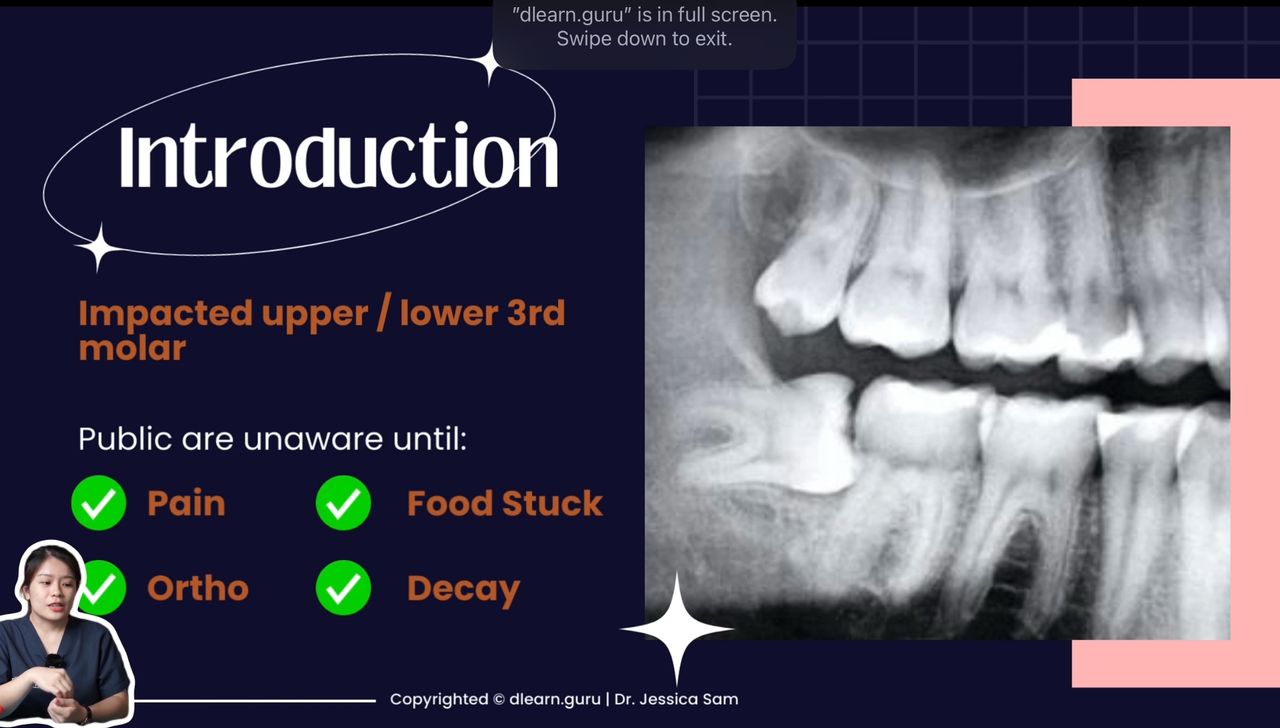
Module 2
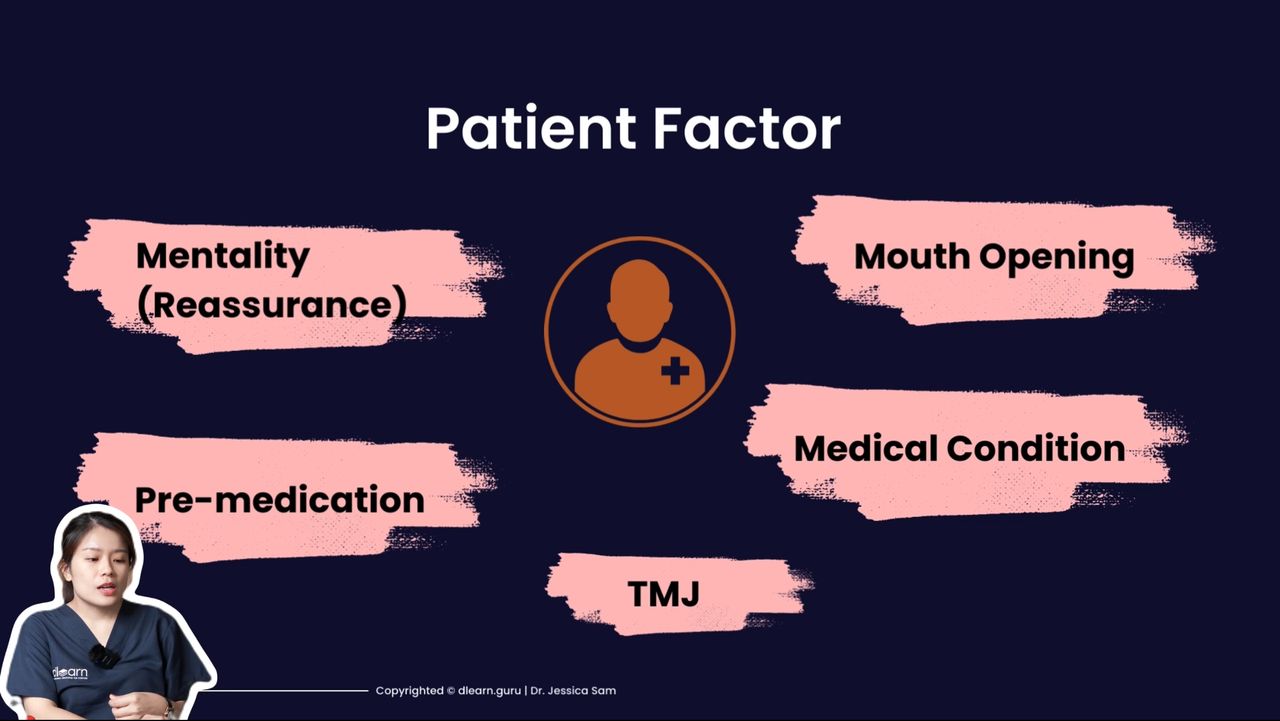
Module 3

Module 4
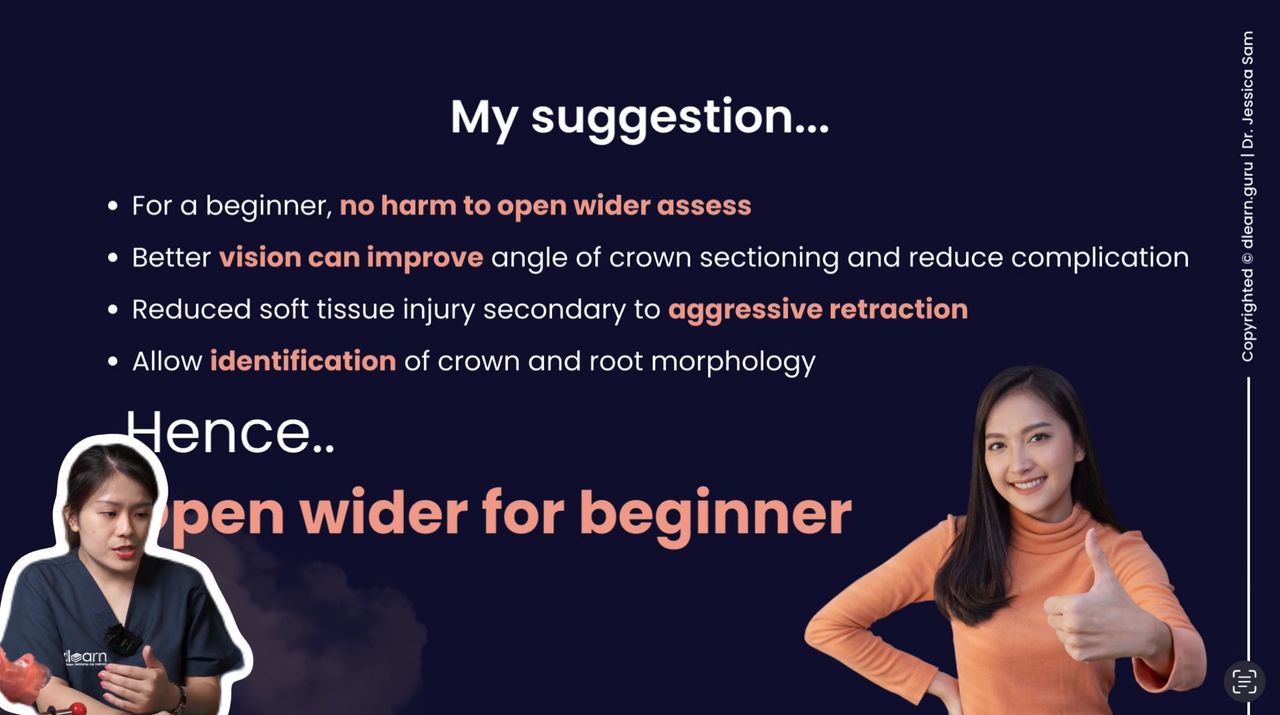
Module 5

Module 6 - Real life QNA from participants

Live surgery 1 - MOS Q4 (Horizontally impacted 48)
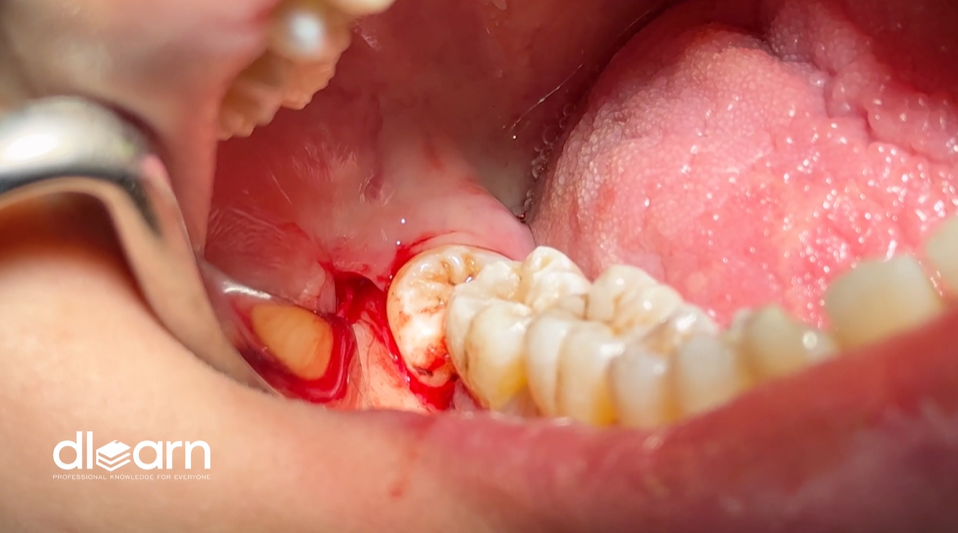
Live surgery 2 - MOS Q3 (Horizontally impacted 38)
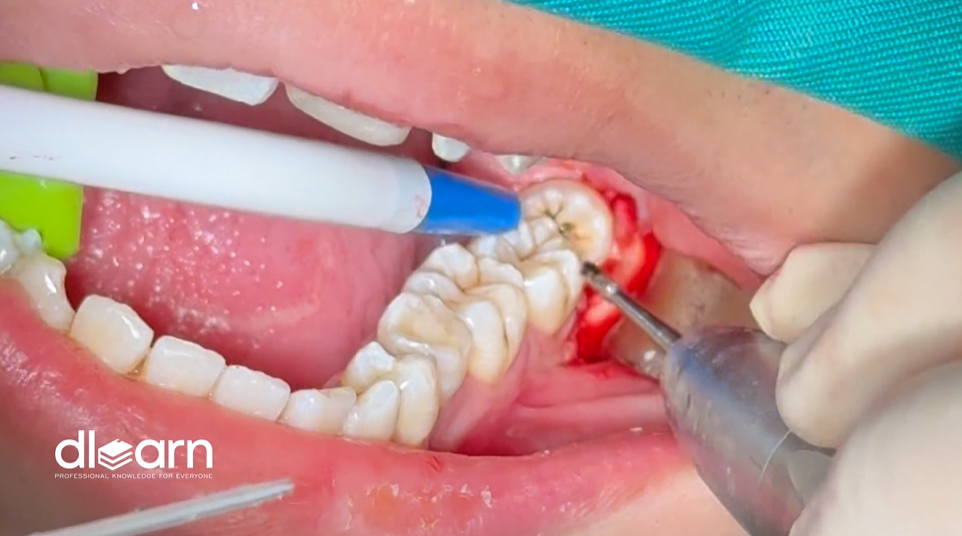
Okay, let's do it..
Mid Year MOS Mania.
You missed out!

 TYPHODONT HANDS ON
TYPHODONT HANDS ON 
